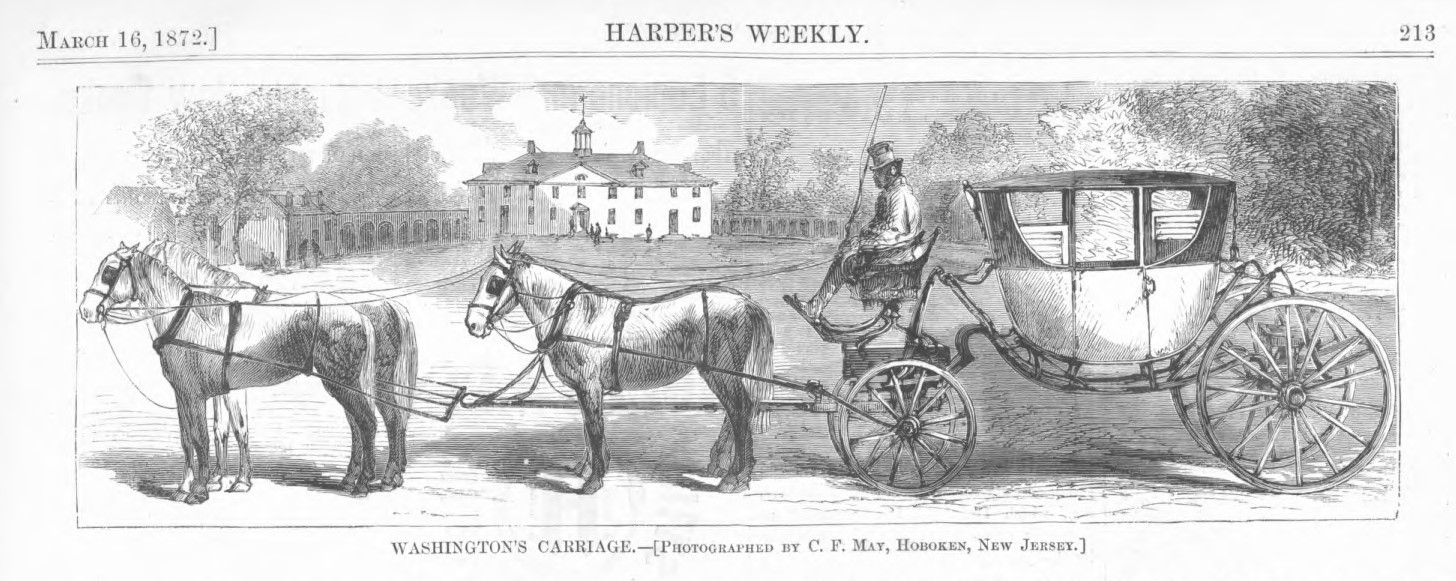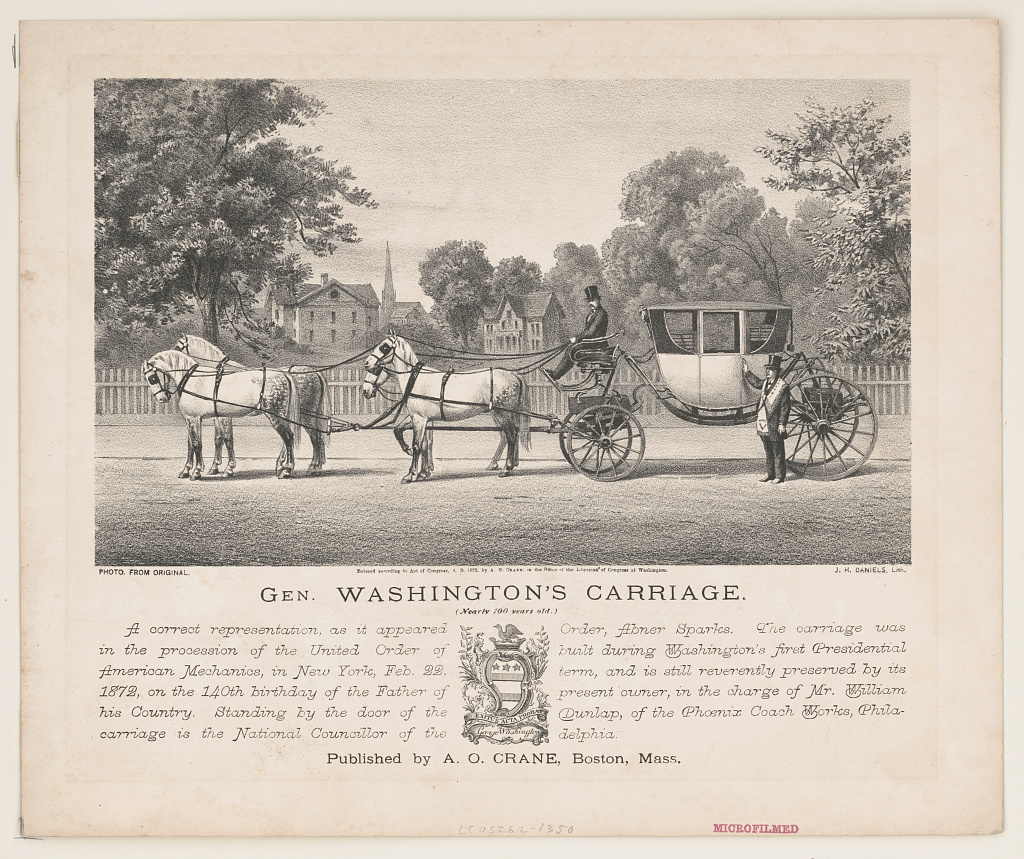From the March 16, 1872 issue of Harper’s Weekly:
WASHINGTON’S CARRIAGE.
ONE of the most interesting incidents of the grand parade in this city [New York City] on the 22d of February was the appearance in the procession of a carriage of venerable and antique structure which once belonged to GEORGE WASHINGTON. The carriage, which is nearly a century old, was drawn by four horses driven by a member of the order of United American Mechanics. It is, of course, but a mere wreck: portions of the old lamps are still remaining; the windows are entirely gone, but some parts of the green Venetian blinds are still there. The vehicle is unlike any of the present day; the body of the carriage can only be compared to a monstrous chapeau turned upside down, and hung upon leather springs, by which all personal discomfort to the rider is prevented, even when passing over the roughest kind of road, for only a pleasant swinging motion is produced. The lower portion is a dirty yellow, the upper black. It will seat four persons comfortably, provided they are of moderate size. Behind the carriage is a sort of cushion, covered with leather, on which the footman stood in the olden time.
This venerable vehicle was built in Philadelphia for General WASHINGTON during his first Presidential term. On his departure for Mount Vernon it was presented by him to Miss POWELL, who retained possession of it till her death, when it descended to her nephew, Colonel JOHN HARE POWELL, a wealthy and influential citizen of Philadelphia. In order to preserve it, this gentleman built a coach-house on his premises at Powelton, where it was housed for many years. His estate having been purchased by a railroad company, the carriage was sent for safe-keeping to the establishment of Mr. WILLIAM DUNLAP, in Philadelphia, in whose possession it still remains.
For some years past the carriage has been a prominent feature in patriotic processions in Philadelphia and other cities. It was the principal attraction at the Philadelphia Sanitary Fair, when thousands of visitors were allowed, for a trifling fee, to sit on the cushions once occupied by the Father of his Country. It was procured for the recent procession by Mr. WILLIAM H. MATHER, of Hoboken, New Jersey, a prominent member of the order of United American Mechanics, to whose courtesy we are indebted for the photograph from which our illustration was made.


